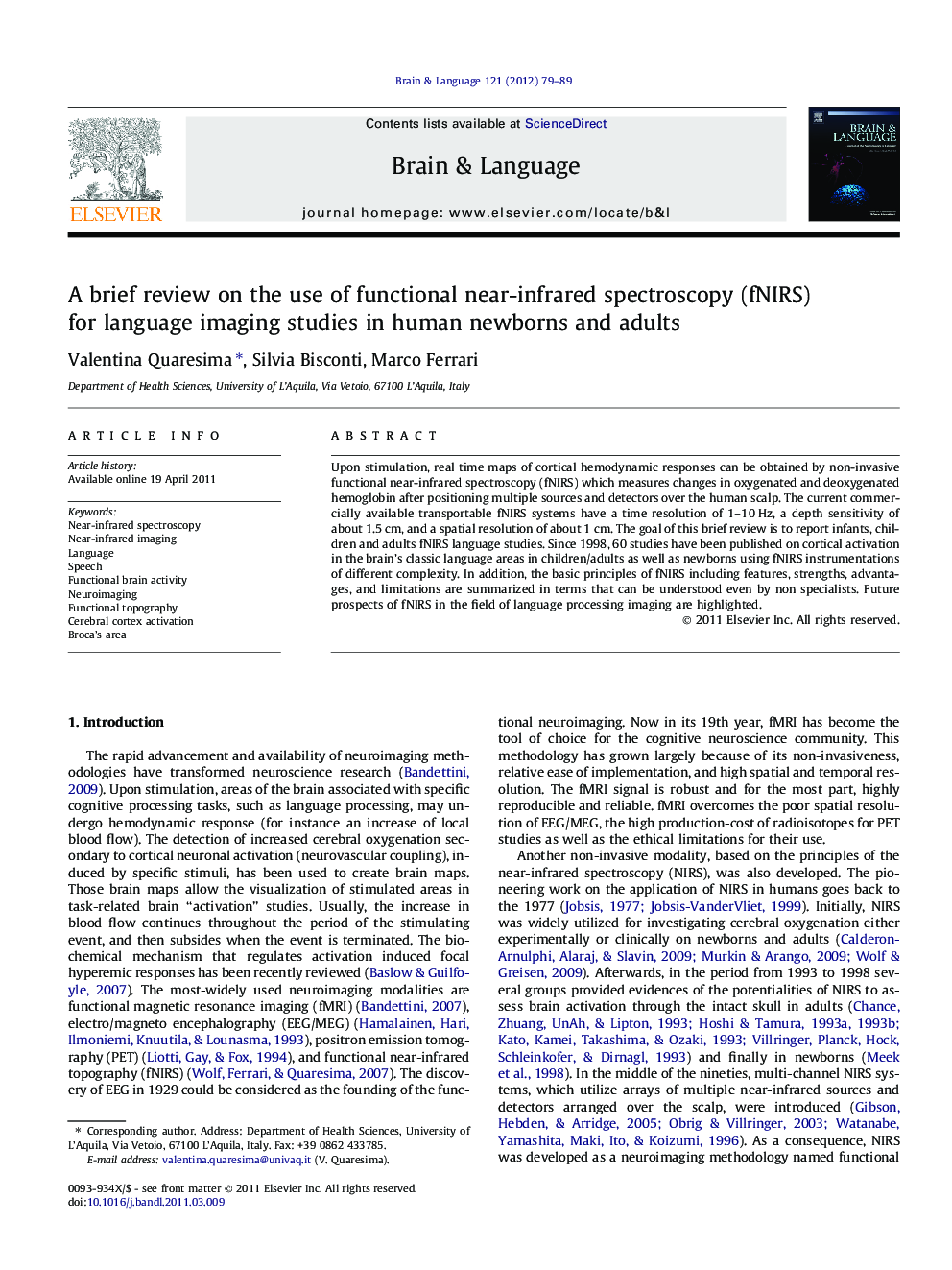| کد مقاله | کد نشریه | سال انتشار | مقاله انگلیسی | نسخه تمام متن |
|---|---|---|---|---|
| 925466 | 921496 | 2012 | 11 صفحه PDF | دانلود رایگان |

Upon stimulation, real time maps of cortical hemodynamic responses can be obtained by non-invasive functional near-infrared spectroscopy (fNIRS) which measures changes in oxygenated and deoxygenated hemoglobin after positioning multiple sources and detectors over the human scalp. The current commercially available transportable fNIRS systems have a time resolution of 1–10 Hz, a depth sensitivity of about 1.5 cm, and a spatial resolution of about 1 cm. The goal of this brief review is to report infants, children and adults fNIRS language studies. Since 1998, 60 studies have been published on cortical activation in the brain’s classic language areas in children/adults as well as newborns using fNIRS instrumentations of different complexity. In addition, the basic principles of fNIRS including features, strengths, advantages, and limitations are summarized in terms that can be understood even by non specialists. Future prospects of fNIRS in the field of language processing imaging are highlighted.
► Non-invasive fNIRS measures changes in oxygenated and deoxygenated hemoglobin over human scalp.
► Upon stimulation, real time maps of cortical hemodynamic responses can be obtained by fNIRS.
► So far, 60 fNIRS language studies in newborn/children/adults have been published.
► fNIRS features, advantages/limitations, and prospects for language studies are reported.
Journal: Brain and Language - Volume 121, Issue 2, May 2012, Pages 79–89